The 10 Best Gins for a French 75, According to Bar Pros
Bartenders say these bottles work best in the sparkling classic.
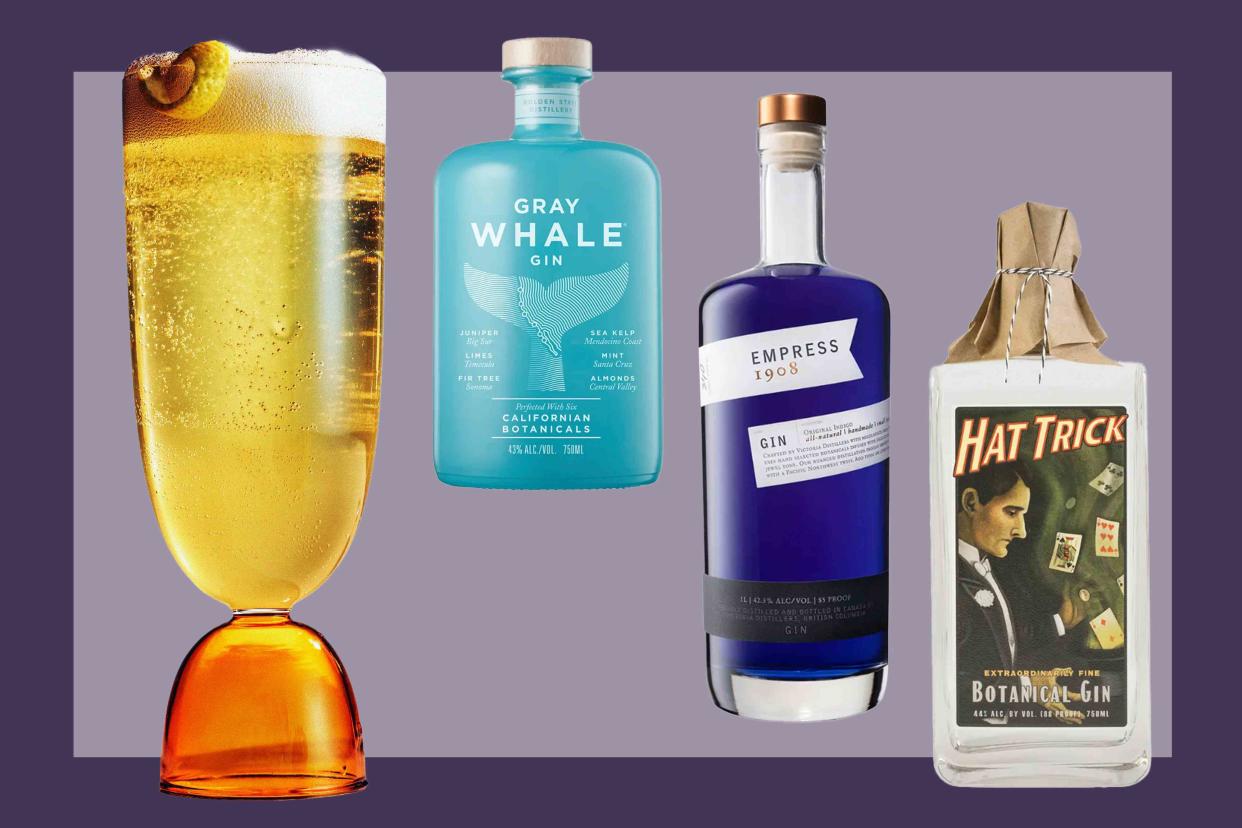
Food & Wine / Photo by Chelsea Kyle / Food Styling by Drew Aichele / Gray Whale Gin / Empress 1908 / High Wire Distilling Co.
One of the best parts of a French 75 is that while the gin-based drink feels wildly celebratory, the recipe is relatively straightforward: an ounce or so of gin, a bit of sugar, lemon juice, and a topping of brut Champagne.
Though it’s easy to make, the history of the French 75 is complex. The drink was first published in 1915 and made with gin, grenadine, and applejack, at the time. In 1926, bartender Harry MacElhone published a recipe called the “75,” a Calvados-based cocktail with absinthe, gin, and grenadine. By 1927, the French 75 evolved into a variation on the Tom Collins, but with a heavy-handed pour of Champagne instead of soda.
Related: Understanding the 4 Main Types of Gin, According to Experts
At the time the modern version of the recipe was codified, the French 75 was considered revolutionary. “This cocktail is a rebel in a glass,” says Niko Novick, beverage director at Las Vegas’ Spiegelworld. “It disrupted the entire industry. Back then, Champagne was either sipped neat, prim and proper, or with a sugar cube and a hint of bitters. Then, bam! Gin dared to crash the party.”
“I love the balance of a French 75, the fragrance, acidity, and complexity all combine to make a really balanced drink with lots of texture,” says Chris Moore, head of bars for The Ned NoMad in New York City.
Though the recipe typically calls for just an ounce of gin, your choice of botanical base is crucial. These are bartenders’ favorite gins to use for a French 75.
The Botanist Gin
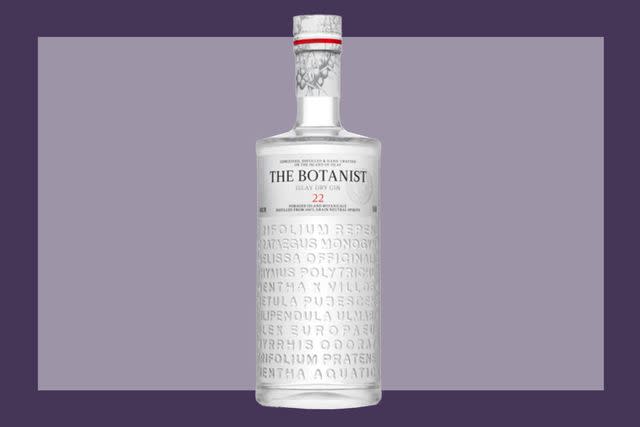
Food & Wine / The Botanist, Islay Dry Gin
New Orleans is famed for great French 75s, and Hotel Monteleone beverage manager Marvin Allen makes many of them, primarily with Botanist Gin.
“At Criollo and the Carousel Bar, we use the Botanist Gin for our French 75 because it has excellent citrus notes and a touch of menthol,” says Allen. He finds those qualities allow the gin to blend quite nicely with fresh lemon and sparkling wine. And the Scottish gin “is bone dry, which keeps the French 75 from becoming too sweet,” he says. “Most gins work well with French 75s, but I would avoid anything that is heavy on juniper unless you really want that herbal flavor to come through.”
Abner Castro Solano, a mixologist at Condado Vanderbilt in San Juan, finds that “the unique floral notes of this gin complement the brightness of the lemon and the effervescence of the bubbly, creating a harmonious balance that is both stimulating and indulgent.”
Gin Mare
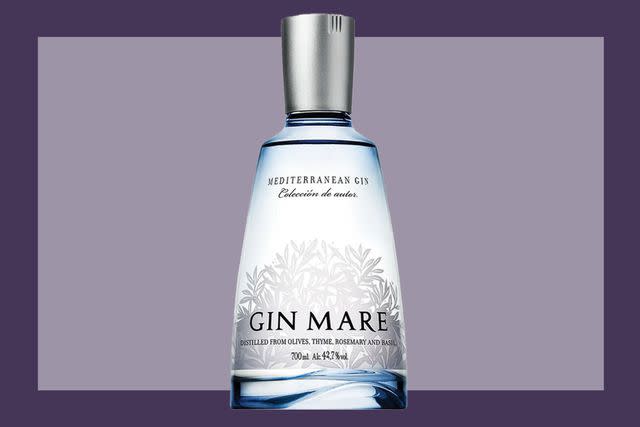
Food & Wine / Gin Mare
“I’ve been on a gin kick for twelve years, and I love to tailor specific gin expressions for different cocktail occasions,” says Novick.
For a French 75, Novick is torn between Tanqueray No. Ten and Gin Mare. For the former, “the citrusy flair is like a tango on your tastebuds.” When referring to Gin Mare, however, he says, “The creamy-oily texture and rosemary and thyme accents add a whole new secret sauce dimension that blew my socks off. I couldn't resist going back for seconds, and thirds, and… you get the idea.”
A liquid ode to the Mediterranean, Gin Mare has strong notes of rosemary, olive, and basil.
Beefeater
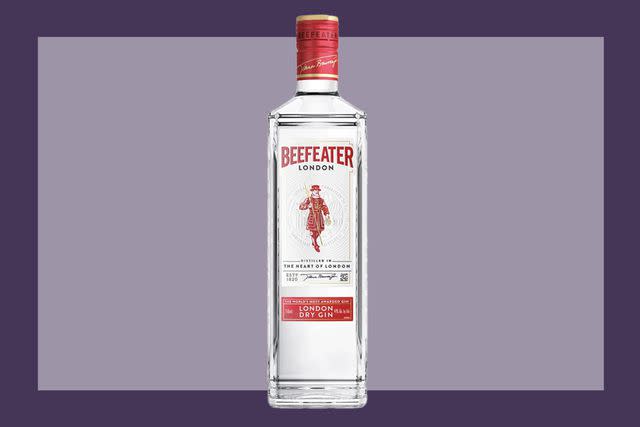
Food & Wine / Beefeater London
“A classic London Dry gin works best in a French 75 and there is nothing more classic than Beefeater,” says Josef Griz, the general manager of New York City’s Darling Rooftop. “The dryer the gin, the more balance between the sweetness of the sugar and the acidity of the lemon juice — Beefeater fits the bill,” he says. “I also like to use spirits that are of the period, and Beefeater would have been on the back bar when the French 75 first made its debut in the Savoy Cocktail Book in 1930.”
Moore also likes the newer Beefeater Crown Jewel, a fancier bottling that includes the addition of grapefruit. “I love an old school London Dry style, juniper-rich gins that sit on the higher-ABV side of things,” he says. “That gin-forward element of the drink is what gives a French 75 its body and round mouthfeel. It needs to punch through the citrus and stand up to the Champagne, so it’s got a big job.”
Bombay Sapphire Premier Cru
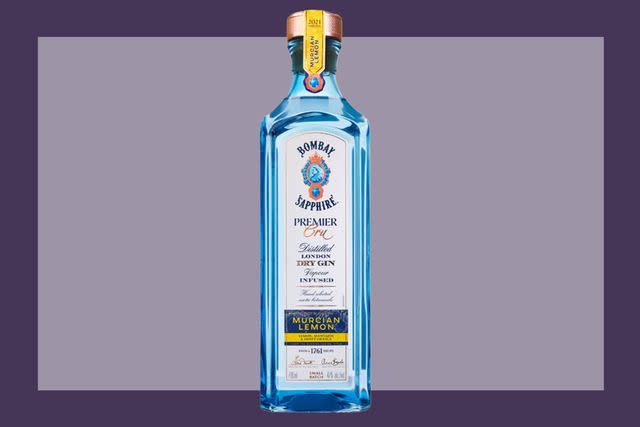
Food & Wine/ Bombay Spirits Company
Moore’s other favorite is Bombay Sapphire Premier Cru, a special bottling of Bombay kissed with citrus. “The citrus is a natural fit for a French 75, and punches in at a nice 47% ABV,” he says. Moore adds a splash of his housemade limoncello to amp up the lemon notes.
Gabe Sanchez, cocktail expert at Dallas bar Midnight Rambler at The Joule, is also a fan of Bombay Sapphire Premier Cru. “The hand-picked and peeled Murcian Fino lemons, navel oranges, and mandarins give a perfect citrus punch without adding extra juice,” he says. “The gin holds up perfectly and balances the yeasty flavor of Champagne.”
“If you want to impress your guests, I would use this gin,” says Sanchez. “The rich citrus flavor doesn’t fade away when layering in other flavors or playing with different techniques.”
Normindia
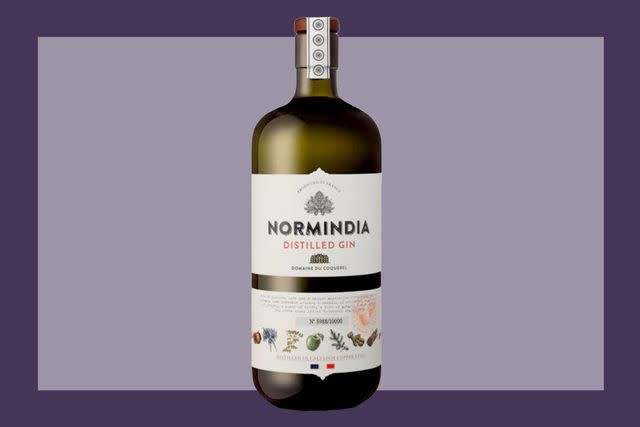
Food & Wine / Distillerie Coquerel
Many historic French 75 recipes call for Cognac, not gin. Jordan Deis, sommelier and beverage director at Saint-Germain in New Orleans likes to lean on a spirit that nods to both origins.
“I love Normindia gin, made in traditional copper pot stills in the region of Calvados,” says Deis. “Like Calvados, it’s made from an apple distillate rather than the traditional grain-based [used for] most gins.”
“That fruit distillate base really gives depth to a traditional gin French 75. It leans more into flavors that are similar to the Cognac-based version of the cocktail while still retaining the refreshing characteristics that fans of the gin version of this classic are often seeking.”
Empress Gin
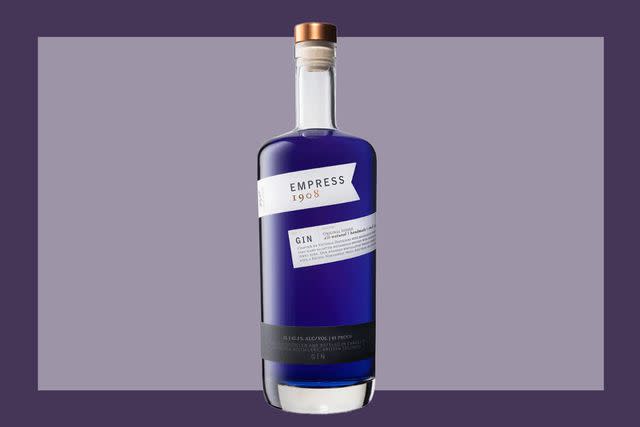
Food & Wine / Empress 1908 Gin
“The French 75 traces its roots back to World War I-era Paris, where it was named after the French 75-millimeter field gun, symbolizing its potent and refreshing nature,” says Sarah Elizabeth, lead bartender at Hotel Swexan in Dallas.
“My favorite gin to utilize is Empress Gin,” says Elizabeth. “It’s renowned for its striking indigo color derived from butterfly pea flower and boasts a blend of botanicals that complement both floral and citrus notes,” she says.
The Vancouver, Canada-made gin lends a visual treat alongside its distinctive flavor profile. “A French 75 made with Empress Gin offers a stunning purplish-pink hue and a refreshing twist on the classic cocktail, complemented by the gin's unique botanical profile and vibrant citrus notes,” says Elizabeth.
Barr Hill Tom Cat Gin
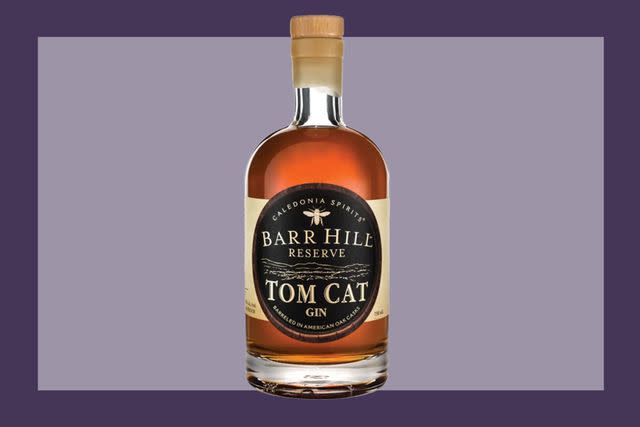
Food & Wine / Caledonia Spirits
Nate Hayden, who runs Mother Pizzeria and Giusto in Newport, Rhode Island, likes to add bold flavors to his French 75, namely vanilla and earl gray. In order to stand up to these big flavors, Hayden turns to gin aged in oak.
Vermont-based Tom Cat Distillery ages their signature gin in new American oak and adds a touch of raw honey for depth and a subtle sweetness. “The woody, vanilla notes of the gin bridge beautifully with the rest of the cocktail and add layers of depth you’d never get from a London Dry,” says Hayden. “It’s still a bright, refreshing daytime cocktail, but the oakiness adds a little savory edge to ground it.”
ISH London Botanical Spirit (Non-Alcoholic)
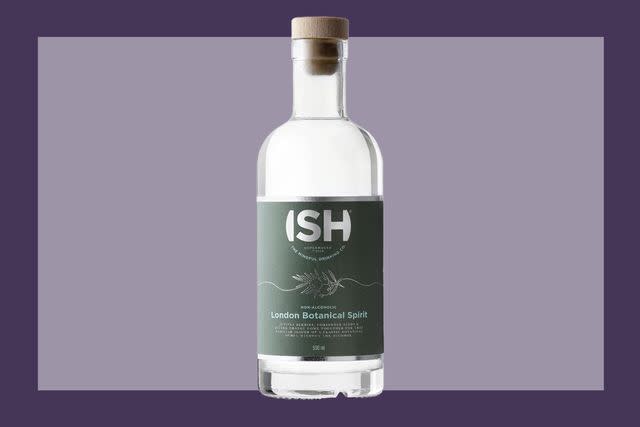
Food & Wine / ISH Spirits
If you’re abstaining, Stephen Rowe, co-owner of Dario of Minneapolis, makes a perfectly delightful French 75 with zero-proof gin.
“It has enough spice to make the drink feel distinctive and unique,” says Rowe. “We add fresh lemon juice and simple syrup just like a traditional French 75. Then we finish it off with Odd Bird Blanc de Blanc de-alcoholized sparkling wine.”
Copenhagen-based ISH sources all the familiar botanicals found in gin: juniper berries and coriander seeds from France, alongside peppercorn and bitter orange, and then uses the hulls of chili seeds to mimic the bite and boldness of gin.
Gray Whale Gin
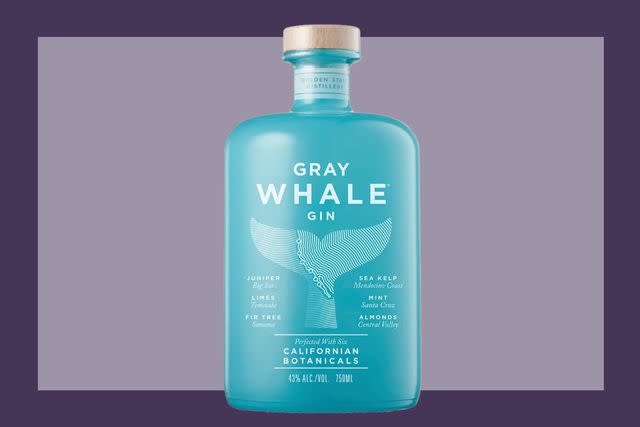
Food & Wine / Gray Whale Gin
While traditional French 75 recipes call for London Dry gin, try swapping in a new-school, all-American style gin like California’s Gray Whale. Botanicals are sourced from the California coast, including Sonoma fir, Mendocino sea kelp, and central California almonds. The base spirit is distilled six times for a creamy mouthfeel and subtle, sunshine-driven citrus notes.
"My favorite gin for a French 75 is Gray Whale Gin,” says Daniel King, restaurant and bar manager of Evelyn's at Nashville’s Hutton Hotel. “The notes of juniper and pine pop with the lemon, and the gin has a salinity that marries nicely with the bubbles.”
High Wire Distillery Hat Trick Extraordinarily Fine Gin
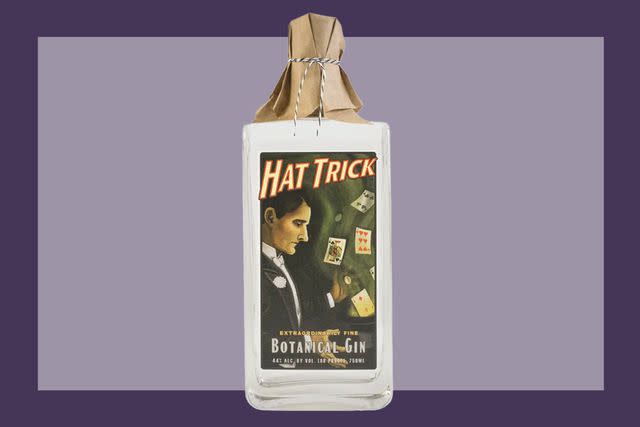
Food & Wine / High Wire Distilling Co.
Hailey Knight, beverage director of Félix Cocktails et Cuisine in Charleston, loves riffing on French 75s. “ It is such an easy cocktail to play with and add various flavors to,” she says. That said, Knight almost always leans on Hat Trick Gin from Charleston’s High Wire Distillery.
“It packs so many fun flavors to compliment the Champagne or sparkling wine used in the 75,” says Knight.
Made with juniper, lemon, orange peel, coriander, and cardamom, Hat Trick Gin is textured, citrus-driven, and versatile on a home bar.
For more Food & Wine news, make sure to sign up for our newsletter!
Read the original article on Food & Wine.






